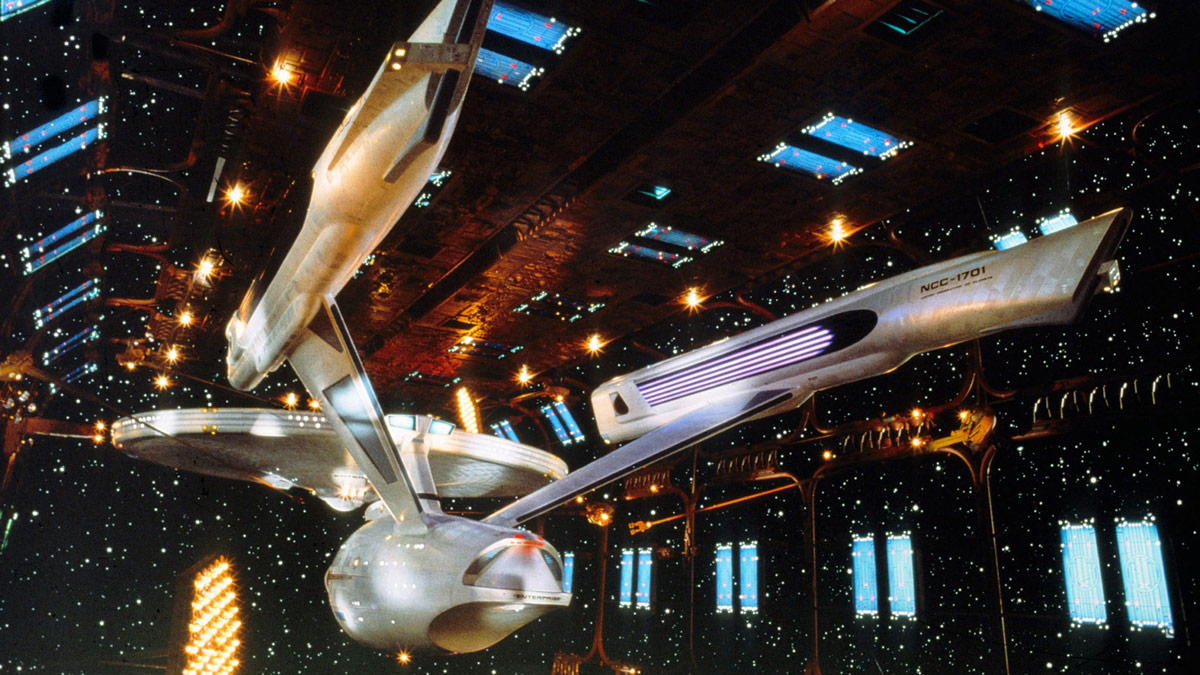
(c) Photofest / Getty Images
The struggles of the special effects staff who created the movie “Star Trek: The Motion Picture” and what they left behind Part 1
Consultation with John Dykstra
Paramount's next choice was John Dykstra, who was special photographic effects supervisor on Star Wars .
Dijkstra previously worked at Trumbull Film Effects, where he co-directed the visual effects with Trumbull and Yuricich on Trumbull's directorial debut, Silent Running (1972). Because of this track record, Trumbull was recommended as a replacement when George Lucas came to ask Trumbull to do the visual effects for Star Wars.
"Silent Running" preview
In fact, Dijkstra was unemployed at the time of Star Wars. Since 1973, he has been a member of the Institute of Urban and Regional Development (IURD) at the University of California, Berkeley, where he developed model scopes for urban landscape simulations (*10). This was a system that used a 16mm film camera equipped with a periscope lens (*11) to motion-control it using DEC's minicomputer PDP-11 to photograph a model of a city. The idea is that by inserting a camera into the gaps between miniature buildings and moving them from the perspective of a person or car, you can realistically experience changes in the landscape. However, funds soon ran out and the research was halted.
That's probably why Dijkstra thought this motion-controlled camera idea could be implemented in Star Wars. In 1975, he established a workshop called ILM in an old warehouse in Van Nuys on the outskirts of Los Angeles to work on Star Wars. The staff gathered here included Al Miller, who was a member of IURD, as well as Richard Alexander and Richard Able, who were developing motion control cameras for commercials at a company called Robert Able & Associates (RA&A). Edlund was there, but most of them had no experience making feature films.
Development of a motion control camera named ``Dykstraflex'' began. While conventional systems were simple, based on linear movement and simple rotational motion, the design was designed to enable complex cubic motion by combining a dolly, crane, and gimbal. We also decided to use the VistaVision format with 35mm 8P film to avoid degrading the image quality. Therefore, they purchased old Vista Vision cameras and optical printers that were still manufactured in the 1950s, combined them, modified them, and revived them as a state-of-the-art system.
However, it is difficult to simultaneously develop completely new production styles and equipment and shoot film. If the equipment is not completed, the number of shots that can be taken will be limited. To 20th Century Fox, which is monitoring the situation at ILM, it looks like the staff are just having fun while they wait. Additionally, most of the staff members do not belong to Hollywood unions, which limits their work.
By the time Lucas and his team returned from filming the live-action scenes at Shepparton Studios in England, ILM had only completed one shot. As a result, George Mather, who had been sent to ILM by Lucas as production supervisor, insisted that Dijkstra be fired. However, somehow the system got up and running, and the movie was released a month later than originally planned.
Star Wars has become a record-breaking hit, but Dijkstra still has to keep the ILM staff fed. Then, he received a request from Universal to produce special effects for the science fiction television series Star Worlds (later retitled Battlestar Galactica). However, Lucas was angered by the use of equipment developed for Star Wars, and various factors became involved, leading to a lawsuit.
“Battlestar Galactica” trailer
Dijkstra and Lucas parted company due to bad relations, and Dijkstra renamed the studio that had previously been called ILM to his own VFX production company, Apogee. Meanwhile, Lucas moves his base to San Francisco with only his loyal members and begins preparations to establish the "New ILM."
Apogee was just getting off the ground when Paramount approached him about working on Star Trek: The Motion Picture, but he already had a client. The project was ``Altered States,'' which was being directed by Arthur Penn at the time, and Apogee was busy preparing for it, and Dijkstra eventually turned down the request for ``Star Trek: The Motion Picture.''
*10 Jerry Jeffress, who was participating in this project, was in charge of developing the motion control camera for Close Encounters of the Third Kind . Jeffress then joined the new ILM.
*11 A lens shaped like an upside-down submarine periscope, which allows it to penetrate into narrow spaces and take pictures from extremely low angles.
Continuing candidate Robert Able & Associates (RA&A)
As a third option, Paramount turned to RA&A, recommended by Trumbull, for the job. For this film, RA&A established a subsidiary, Astra Image Corporation, and teamed up with Magicam (*12), which had previously been dropped due to the cancellation of Star Trek: Phase II, and was fully prepared to work on it.
However, to write the conclusion first, RA&A was dropped from Star Trek: The Motion Picture midway through, and Astra Image was shut down. Previous articles about this problem have blamed it on RA&A's lack of experience with feature films, and the wasted budget and time on developing a system that was unlikely to be viable. However, this is too one-sided.
The reason for this is related to the history of the establishment of RA&A. This company was founded by Robert Able, a former documentary film director, and Con Pederson, who was a special photographic effects supervisor on `` 2001: A Space Odyssey '' (68). In other words, he had extensive experience in feature films.
*12 Magicam's proprietary compositing system was strictly for video shooting. Therefore, it is not used in this work, and the company concentrates on producing miniatures.

